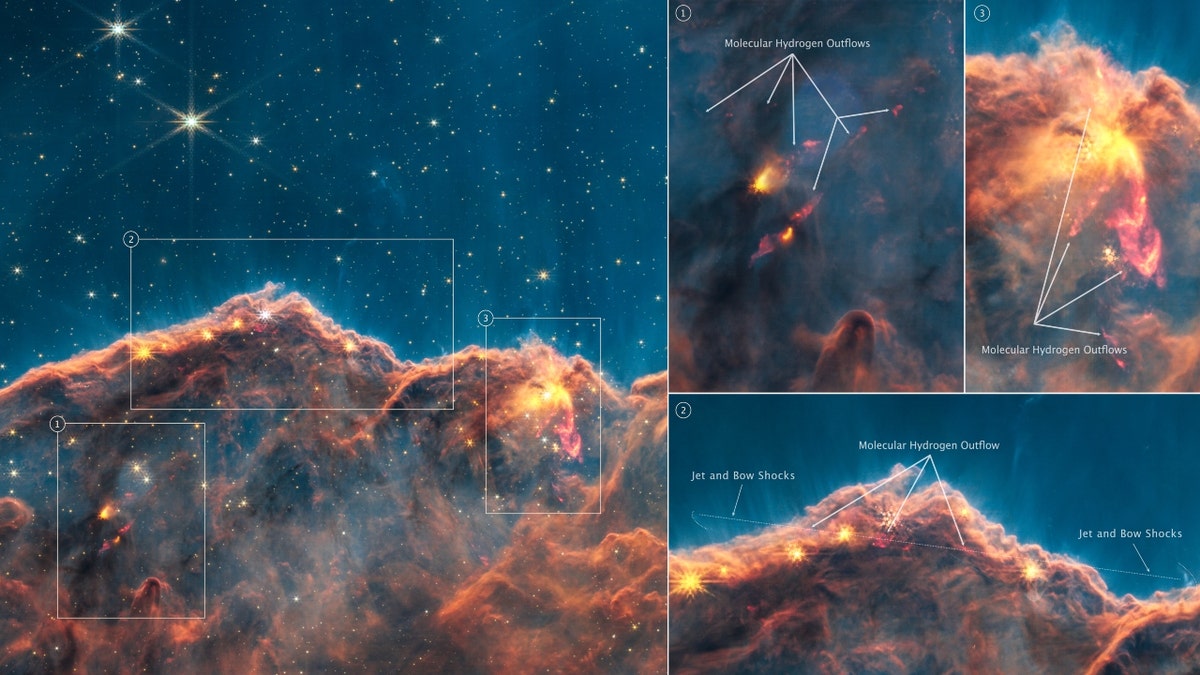The James Webb Space Telescope team announced Thursday that scientists had discovered dozens of energetic jets and outflows from young stars previously hidden by dust clouds in one of the $10 billion-dollar observatory’s iconic first images.
In a release, NASA said that the “rare” find – including a paper published in the Monthly Notices of the Royal Astronomical Society this month – marks the beginning of a new era of investigating star formation, as well as how radiation from nearby massive stars might affect the development of planets.
The Carina Nebula’s Cosmic Cliffs, within the star cluster NGC 3324, is seen in a new wavelength with Webb and the telescope’s capabilities allow researchers to track the movement of other features previously captured by the Hubble Space Telescope.
Analyzing data from a specific wavelength of infrared light, astronomers discovered two dozen previously unknown outflows from extremely young stars revealed by molecular hydrogen.
STRIKING NASA IMAGES REVEALS IO’S VOLCANO-LACED SURFACE
Molecular hydrogen is a vital ingredient in stellar formation and a good way to trace the early stages of that process.
“As young stars gather material from the gas and dust that surround them, most also eject a fraction of that material back out again from their polar regions in jets and outflows. These jets then act like a snowplow, bulldozing into the surrounding environment. Visible in Webb’s observations is the molecular hydrogen getting swept up and excited by these jets,” NASA explained.
Objects were discovered: including “small fountains” and “burbling behemoths that extend light-years from the forming stars.”
RUSSIAN SPACE CAPSULE LEAK LIKELY DUE TO MICROMETEORITE STRIKE, OFFICIAL SAYS
Previous observations of jets and outflows looked mostly at nearby regions and more evolved objects that are already detectable in Hubble’s wavelengths.
“The unparalleled sensitivity of Webb allows observations of more distant regions, while its infrared optimization probes into the dust-sampling younger stages. Together this provides astronomers with an unprecedented view into environments that resemble the birthplace of our solar system,” the agency noted.
Many of these protostars are set to become low-mass stars, like the sun.
This period of star formation, NASA added, is particularly hard to capture because it’s relatively fleeting.
Webb’s observations are also help astronomers shed light on how active the star-forming regions are.
By comparing the position of previously known outflows in this region to Hubble data from 16 years ago, the scientists were able to track the speed and direction in which the jets are moving.
https://www.foxnews.com/science/image-nasa-webb-telescope-stellar-formation-rare-find
